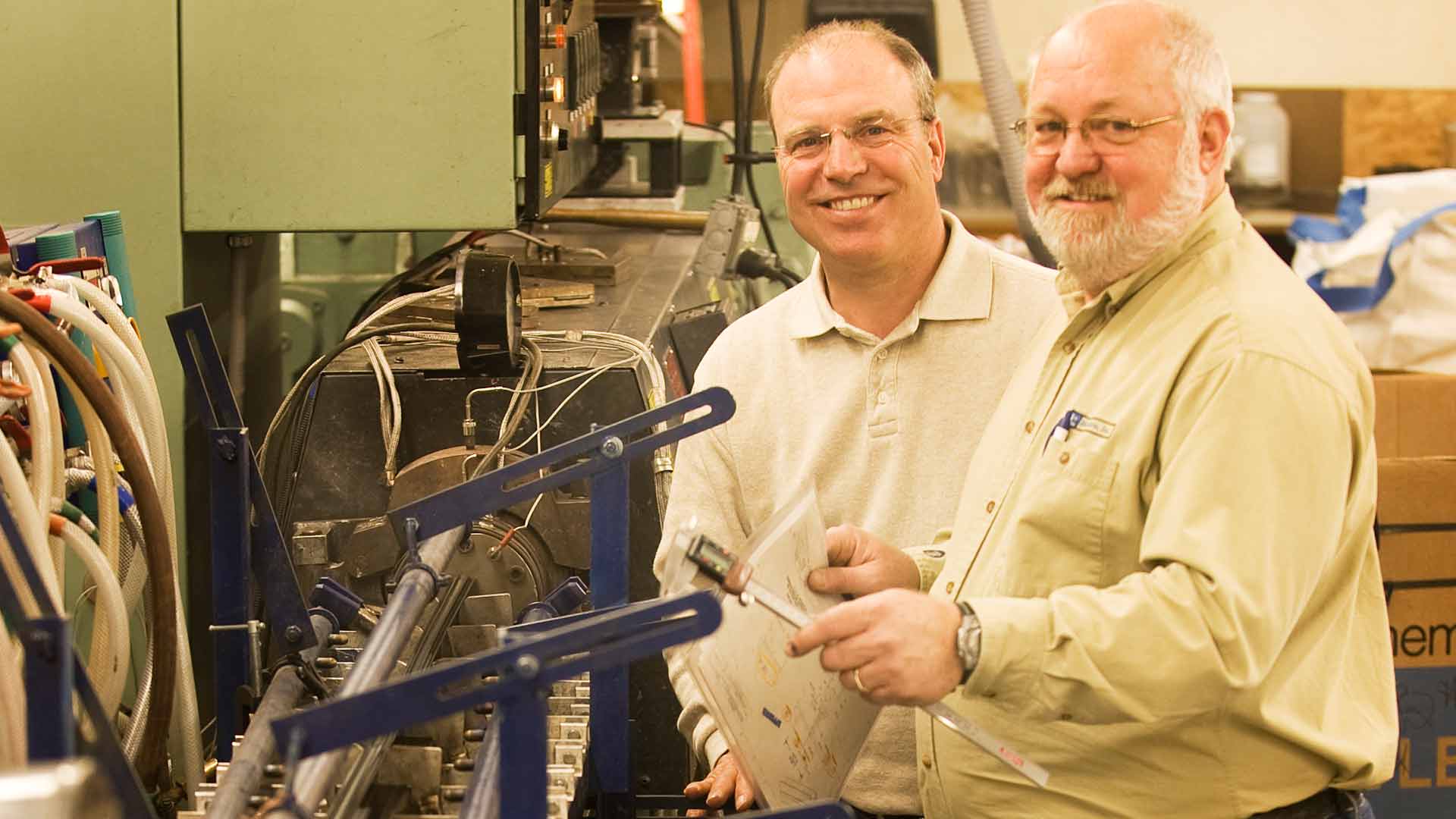Blooming Prairie, Minn. — Building products, made by a southern Minnesota extrusion company, have a material difference.
Bio-Plastic Solutions, LLC is manufacturing durable furniture parts and building components from corn-based plastic. The company is one of the first in the nation to use renewable polymers in plastic profile extrusion, a process for making continuous plastic shapes. “We don’t know of anybody else doing this for profile extrusion,” says Gary Noble, Bio-Plastic Solutions founder and CEO.
The Blooming Prairie firm has produced traditional extruded plastic parts for doors, windows, office furniture and medical devices for a decade. This year the company introduced three new products for the building industry made from BioBest® Bio-copolymer, its patent-pending renewable plastic material.
BioBest furniture edge trim, drywall corner bead, and interior wall guards are made from a blend of corn-starch-derived polylactic acid (PLA) and high-quality, petro-based polymers. The new products contain more than 80 percent renewable biobased carbon, Noble says, and are recyclable.
With AURI’s help, Noble’s company is also developing extrudable PLA polymers that incorporate crop fibers, for use in building interiors. “We’ll look at different ag fibers and particle sizes to see what will work best in their equipment and add strength and heat tolerance,” says scientist Al Doering, who heads AURI’s coproducts lab in Waseca.
Bioplastics is a new focus for AURI, says project director Denny Timmerman. AURI is working with several state manufacturers and economic development groups to foster this emerging sector. Minnesota possesses “the plant capacity and workforce necessary to develop an industry cluster in the design and manufacture of products from renewable materials,” Timmerman says. “We think it’s the next step in adding value to Minnesota ag products.”
Eight years in development
Bio-Plastic Solutions has invested eight years and more than $750,000 in developing its renewable-plastic components.
Noble, 51, has 30 years of experience in the manufacturing sector, including two decades with Owatonna-based tool maker OTC. In 2000, he became an entrepreneur and bought a distressed plastic extrusion company in Blooming Prairie, his hometown. He built it into the million-dollar-plus business, DiaServe, Inc., now a subsidiary of Bio-Plastic Solutions.
About the same time, Noble began working with several other southern Minnesota entrepreneurs to develop renewable polymers from ethanol byproducts. He thought biopolymers would offer a chance to “differentiate our little extrusion company from all the others out there,” says Noble, who was also looking for sustainable products.
That first bioplastics effort fizzled after five years, he says. But by then, Cargill’s NatureWorks was supplying renewable PLA
PLA is used primarily for disposable packaging. “We thought there were opportunities to make more durable products from PLA, too,” Noble says. “We started with a simple product — edgeband for plywood or particle board furniture. We were working with office furniture companies and picked up on the opportunity.”
Working by trial and error, Noble devised a PLA-based material with the physical characteristics needed for furniture edgeband.
“When we were done with a commercial run, we’d do a trial run with a bioplastic blend to test a particular formula, temperature, speed, thickness — all the parameters of our industry.” There were some expensive mistakes, Noble says, like the time they destroyed a brand new $8,000 screw. Gradually, “our materials development advanced to the point where we could make more complex products intended to be used for a longer time, like corner bead for sheetrock.”
Interest rising …
There’s strong interest in renewable-plastic building materials and furnishings, Noble says. More commercial and residential contractors are pursuing LEED green building certification, he says. Major companies, such as Wal-Mart, Target, Best Buy and Home Depot, are pushing their suppliers to produce more sustainable products. The U.S. Agriculture Department is putting together a “BioPreferred” labeling program for renewable products. Meanwhile, California has passed laws that limit volatile organic compound (VOC) emissions from resins such as PVC, used in consumer products.
Advances in materials science and engineering, higher anticipated oil prices, consumer demands for green products, and environmental regulation are also fostering bioplastic development, Timmerman says.
… but economic climate tough
The construction and building trades have been hammered by the economic downturn, Noble says. “A lot of our customers have seen a 50 or 60 percent drop in their business.” Manufacturers are slashing prices to survive, adding to competitive pressures. Noble has seen his sales revenue fall by 45 percent during the recession, forcing him to cut his workforce from 13 to 9. All this has made it really tough to finance and launch new products, he says.
Still, Noble is convinced that demand for durable bioplastics will be robust, as long as price and performance are on par with petroleum-based plastics. Recently, for instance, a Milwaukee architect specified BioBest components in two buildings “before they even talked to us,” Noble says, “simply on the basis of our website information.”
Markets such as health care facilities and baby furniture look very promising, Noble says. “BioBest products contain no PVC plastic, no formaldehyde or hazardous chemicals, and emit no harmful VOCs.” Bio-Plastic Solutions’ products have been picked up by several distributors and manufacturers, including Forest Specialties of Humbolt, Iowa and Baltix Sustainable Furniture of Long Lake, Minn.
“There are lots of opportunities for new PLA applications,” Noble adds. One of his customers in Fergus Falls, for instance, wants to replace a steel window component with a PLA-based substitute, if it meets industry standards. Bio-Plastic Solutions and AURI will be working with the company on product design and testing. “We are trying to target customers and sectors that are really looking to be more green,” Noble says.
